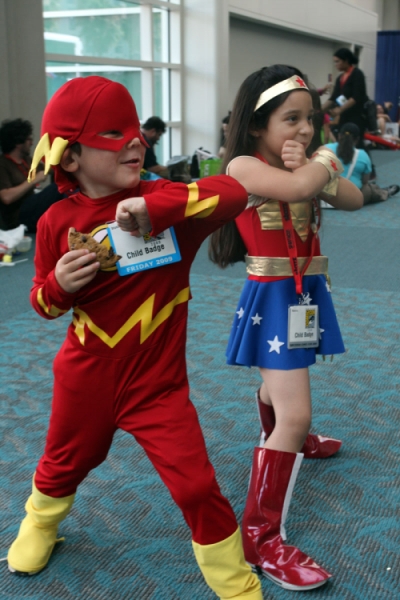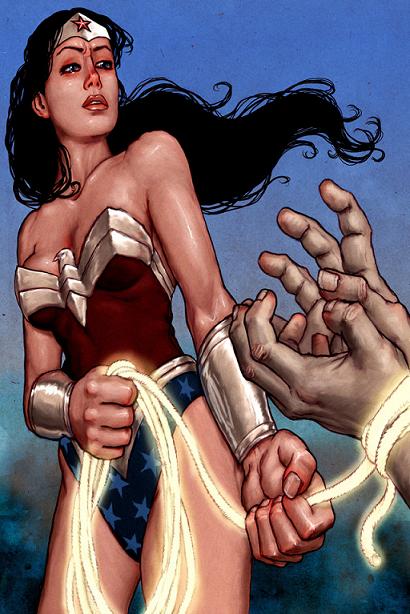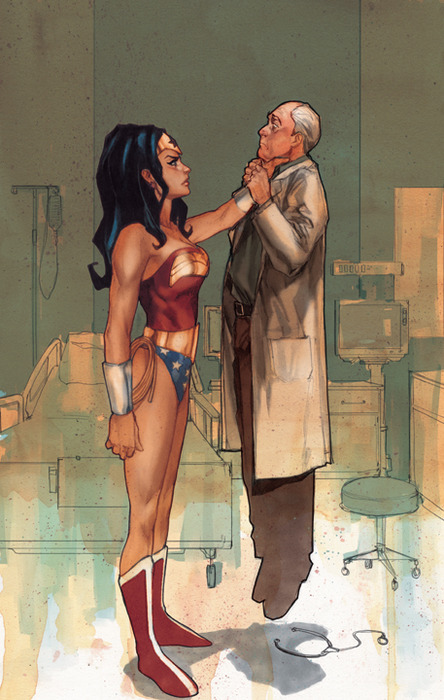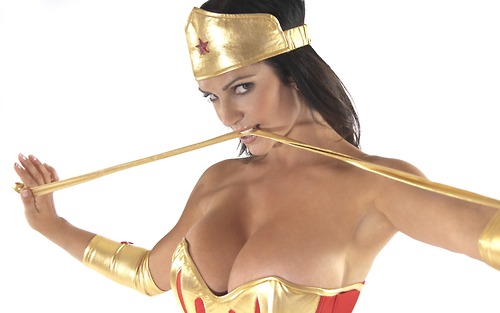
via fyeahww on the tumblr
“Wonder Woman — and the trend toward male acceptance of female love power which she represents — indicates that the first psychological step has actually been taken. Boys, young and old, satisfy their wish thoughts by reading comics. If they go crazy over Wonder Woman, it means they’re longing for a beautiful, exciting girl who’s stronger than they are. By their comics tastes ye shall know them! … Wonder Woman satisfies the subconscious, elaborately disguised desire of males to be mastered by a woman who loves them.
… Normal men retain their childish longing for a woman to mother them. At adolescence a new desire is added. They want a girl to allure them. When you put these two together, you have the typical male yearning that Wonder Woman satisfies.”
(Marston, William Moulton qtd. in “Our Women Are Our Future.” Richard, Olive.* The Family Circle. August 14, 1942.
Marston was Wonder Woman’s creator, but that’s a story for another day. Also he lived in a polyamorous relationship with his wife and the author of this article, Ms. Richard, but that is also a story for another day. I’m pleased that this brief dive into psychology has already uncovered an aspect of Wonder Woman that leaves me cold, or that I feel I do not share. I don’t mind taking initiative (especially in certain aspects of the relationship), but I hate being the stronger one.
I dislike getting pushed in to the corner and forced to make decisions and ask repeatedly for a thing to be done that has to be done and can only be done by my partner. It makes me feel like a nagging bitch, which I fear and hate, and it’s not fair. I want to be equals, I want to feel like we can rely on one another. I don’t even necessarily want to be total equals; I don’t know that I’d want to completely submit to a partner, but it would be nice to relax and feel taken care of. Not to always worry, not to be the only one tuned in to the big picture — not to feel alone.

Art by quasilucid via fyeahww on the tumblr
And it starts out all nice-guy like, “No, you pick a restaurant. I don’t care where we go,” or, “Let’s get something you want to see,” but it builds in to this passive-aggressive thing where it turns to this slow-simmering resentment on both sides. Mine because I don’t want to be in charge, at all, ever, I hate feeling that way and I hate being forced to lose respect for someone I love; the other person’s because even though they have put me in this position of power it was really to avoid responsibility and now they’re feeling mutinous, the immaturity of which makes me see that they really are, in fact, weaker than me and makes me lose even more respect. When I can’t respect someone, then I don’t feel like I have a partner, and when I don’t feel like I have a partner, I don’t feel safe, and when I don’t feel safe, I am out of love.
I hate, hate, hate that aspect of a relationship. I hate being more powerful. There might actually be literally nothing that I hate more than that when it comes to love.
Cheese blintzes, looks like Day 2 was pretty damned educational for me. I’m going let that make up for the week and some odd days in between Days 1 and 2.





